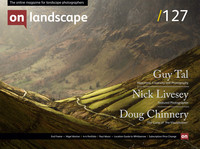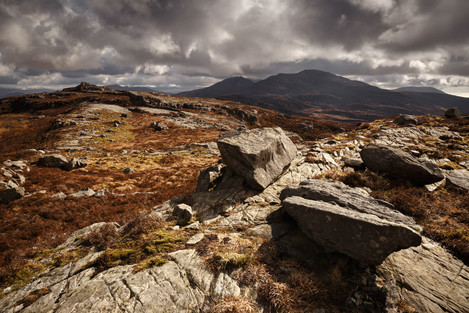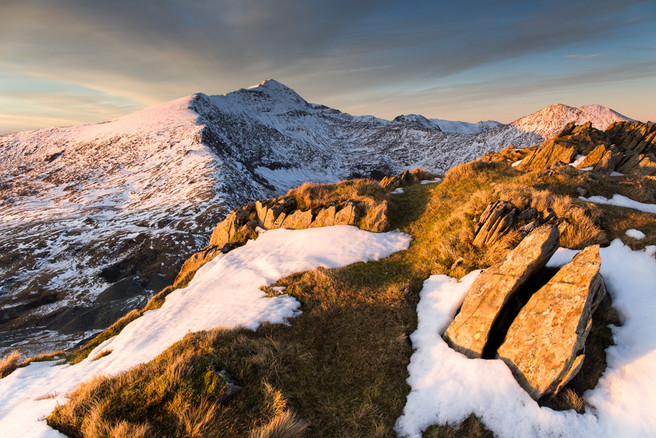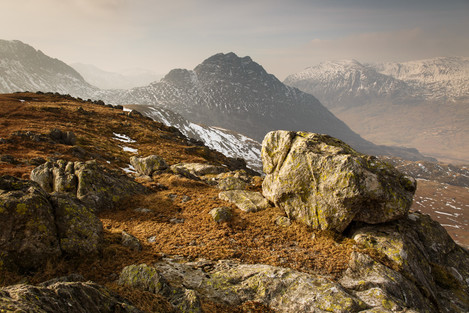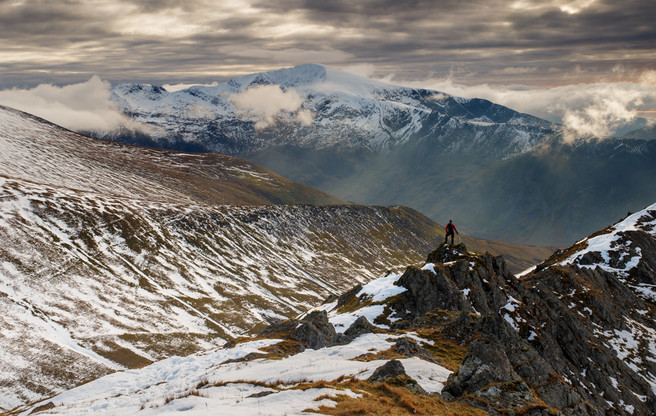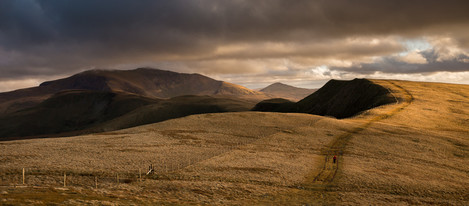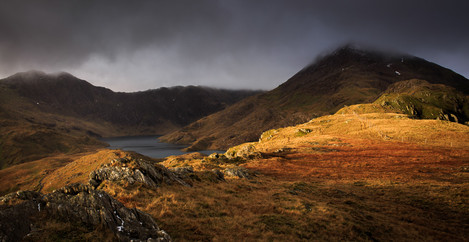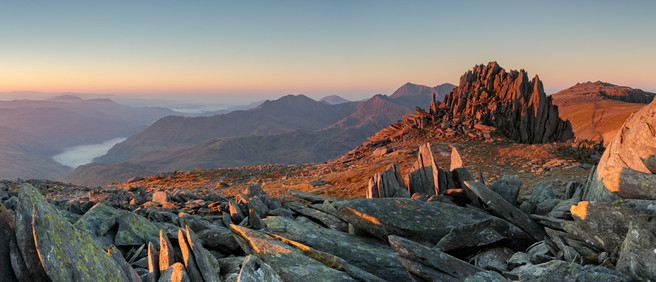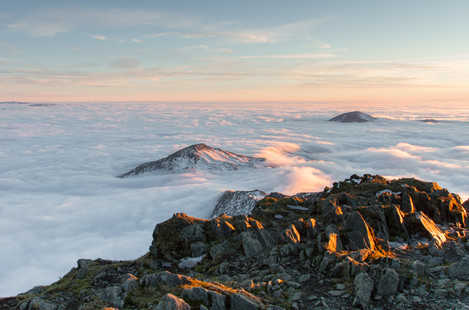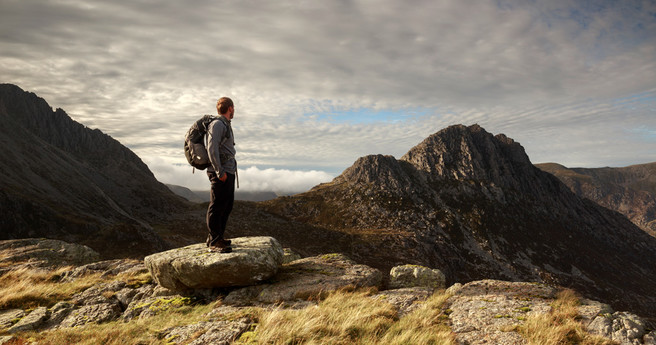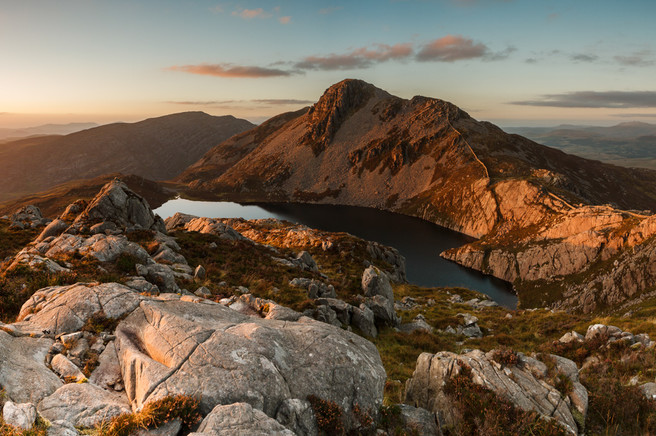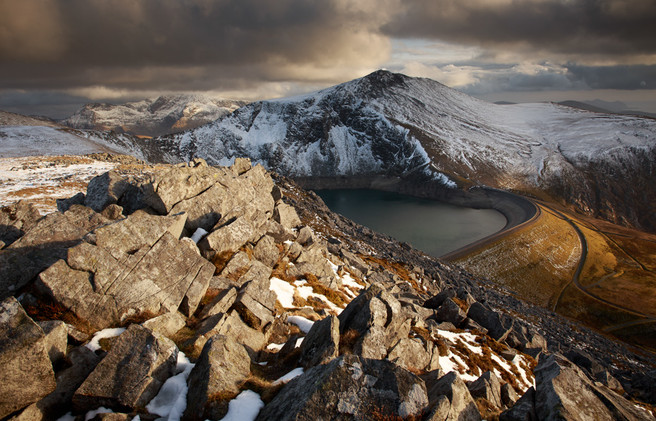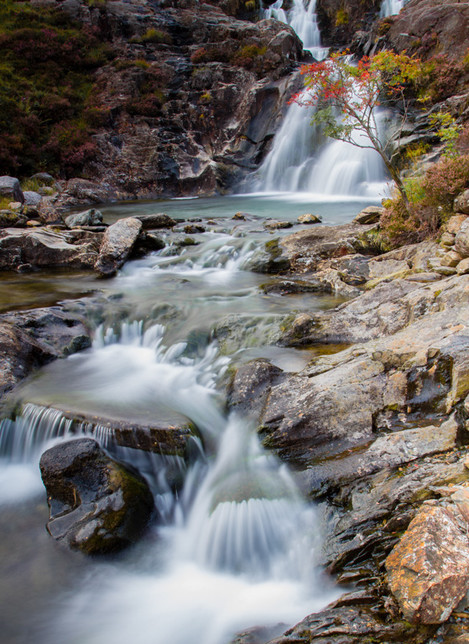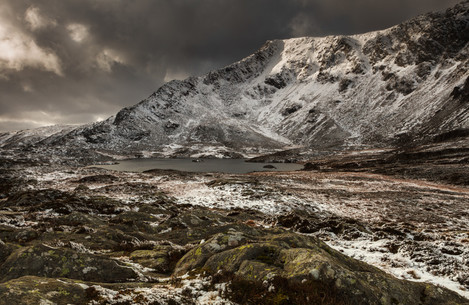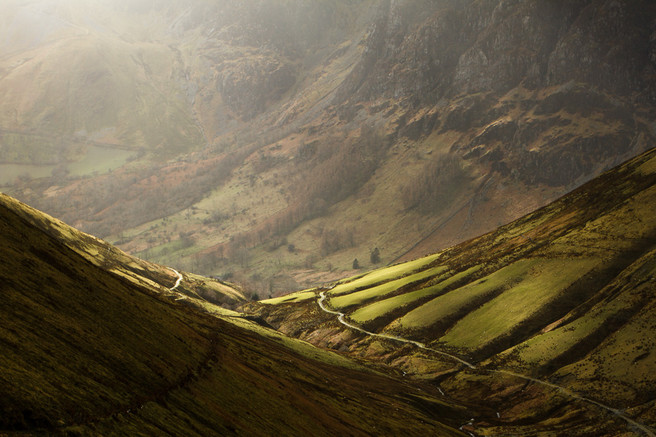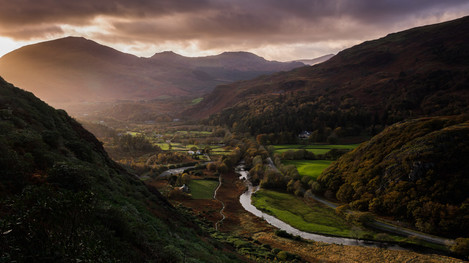Featured Photographer

Nick Livesey
Nick Livesey is a waiter living in Capel Curig in the heart of Snowdonia National Park. He is a lover of Leffe, red wine and the Beach Boys. He is also a semi-professional photographer specialising in mountain landscapes.
nickliveseymountainimages.wordpress.com

Michéla Griffith
In 2012 I paused by my local river and everything changed. I’ve moved away from what many expect photographs to be: my images deconstruct the literal and reimagine the subjective, reflecting the curiosity that water has inspired in my practice. Water has been my conduit: it has sharpened my vision, given me permission to experiment and continues to introduce me to new ways of seeing.
Can you tell me a little about yourself – your education, early interests and career?
I’ve had many incarnations in my 43 year stint on this planet but have always been the sort of person who throws themselves into something with all their heart and soul; I’m an all or nothing type of guy! Although I’m originally from Manchester, I grew up in Peterborough on the edge of the fens and was a typical child of the 70s/80s. I used to love playing football, going to watch the local speedway team, exploring the city on my push bike and getting into mischief with my mates. I had absolutely no interest in school and left a year early without any qualifications to pursue music which was my first real obsession.
I would play the guitar for 8 hours a day and gig with my band in the evenings which was enormous fun for someone who should have been at school getting an education! I later learned to play five more instruments and worked in a local recording studio for a few years where I engineered and produced sessions as well as teaching guitar and trying to write the hit single that would set me up for life. Needless to say, that didn’t happen! In my mid-20s my passion for playing waned and I reluctantly entered the ‘real’ world and mainly drove fork lift trucks which I actually really enjoyed.
What do the mountains mean to you and what impacts have they had on your life?
It wouldn’t be an exaggeration to say that spending time in the mountains whether walking, climbing or taking photographs is my life. It’s been that way for the last 15 years and aside from family and friends they are my greatest source of joy, solace and inspiration. I’ve spoken in past interviews about my history of substance abuse, how discovering the mountains had a transformative effect on me and how, over time, they helped me to find a way of life that was mentally, physically and spiritually more healthy and fulfilling. When I’m out in the hills whether photographing them or just traipsing around it is almost an act of worship, and I enjoy a wonderful feeling of freedom.
Of course, it’s hard for any of us to predict what life will bring in the future but at the moment I am completely devoted to the hills, and through thick and thin they are the one constant that grounds me and gives meaning to my life. As a photographer, I feel very fortunate to be able to immerse myself so deeply in my subject matter, but that didn’t happen by accident. After a particularly painful relationship breakdown, I found the courage -practically overnight- to throw everything in and put the mountains right at the centre of my life. It was the best decision I’ve ever made!
When did the photography bug first get you? What nudged you from simply taking a photographic record of your climbs to making more considered images?
A couple of months later I checked out a few entry level DSLRs as that was all I could afford, but they felt like toys, and I knew I would smash them up in no time. In the end, I settled for a Canon G12 which I used exclusively in manual mode, learning a lot in the process. That was in December 2010 and the moment I got that camera everything changed, and I entered into a frenzy of photographic activity both in the mountains and in the Welland Valley where I lived at the time. When I look at it now, the first year or so was incredibly exciting, and I went hammer and tongues exploring all the more garish and dishonest extremes of post-processing, HDR, replacing skies, that kind of thing.
I used to post my pictures on the UK Climbing website, regularly getting a photo of the week and did really well in their first annual photography awards coming 3rd overall and winning two of the categories. I was starting to get a bit too big for my boots and relished the acclaim, but there was a nagging feeling that some of my more popular shots were the result of subterfuge so from then on I tried to be more honest with myself and give the landscapes I love the respect they deserve. Strangely enough, I don’t get a photo of the week very often these days!
Who (photographers, artists or individuals) or what has most inspired you, or driven you forward in your own development as a photographer?
This isn’t an easy question to answer at all because although I greatly admire the work of so many photographers I am not inspired by their work as such, I gain all my inspiration from my immediate surroundings which are a part of my everyday life. That said, there are certain individuals whose incredible work rate is a kick up the backside sometimes, Andrew Yu being one that instantly comes to mind. He consistently churns out superb images week in, week out and I don’t know how he does it considering he works full time and is a family man. He is a proper pocket rocket!
I would have to mention John Rowell, my ‘Soul of Snowdonia’ colleague, who has been a bit of a mentor to me since my arrival in Wales. I am by nature impulsive, petulant and argumentative and John has put up with me for three and a half years. He offers mature, measured advice from decades of experience and is always having it thrown out by me but never complains. He’ll sit back quietly, waiting for the penny to drop which sometimes takes months but it always does eventually and then I have to say “John, you were right” which I think he enjoys enormously!
Thinking about it, there is one photographer in particular who has been a huge inspiration to me and is perhaps the reason I am sitting here doing this interview. My introduction to the superb mountain scenery we have here in Britain and my inspiration for exploring it comes from the books of Walter Poucher which I chanced upon in my local library in my late twenties. His books Wales, The Highlands of Scotland and Lakeland Panorama provided the original spark that led me to the life I now lead and although his work is very dated I still look at them regularly, and strangely his photographs take me in my mind’s eye into the mountains more vividly than the best contemporary UK mountain photography does.
Oh, and one more! Dave Newbold, whose photography can be found on post cards and posters all over North Wales. Dave’s classic images were all shot on film, many of them have figures in the landscape and feature wonderful light. He’s still at it now, but his stuff has lost some of that youthful vigour! I’d like to think I am picking up the baton from Dave in producing Snowdonian mountain photography from the perspective of a mountaineer rather than a landscape photographer.
How has moving to Wales and developing a close connection with one place changed things for you?
Before the move, I spent a great deal of time in Wales but also regularly visited Lakeland, Scotland and the Peak, but I started to feel I was just collecting a random collection of images from holidays or weekend trips, almost photographic tourism albeit with a real affection for the places in which it took place.
It’s the same thing when I actually go out to shoot. I sit there looking at the surrounding mountains, their ridges, crags and lakes, recalling numerous experiences both alone and shared with others. This aspect of concentrating on a single area has brought me a real sense of belonging and given my work context which I feel was missing when I was flitting here, there and everywhere.
Guy Tal posted something the other day which perhaps sums up what I am trying to say…”There are many landscapes I find beautiful, but not many where I am comfortable being and working in. For better or worse, I need to feel connected and comfortable with the place I am in to make images that are meaningful to me. This sometimes makes for an awkward conversation when asked about my desire to photograph in other places. It's not about the landscape; it's about *this* landscape”.
How much time are you able to devote to photography? Do you have a ‘typical’ day or routine?
Aside from work commitments I can spend as much time out on the hills with my camera as I like. In the summer months, I can feasibly do a sunrise from a summit before running down to work and then go out for a sunset at the other end of the day although these days that level of activity is reserved for when I am almost certain that the conditions will be favourable.
The main limiting factor is the weather which can be bad for weeks on end. Last autumn/winter it rained here in Capel Curig every day for three months, and I did very little photography as I thrive on good light and struggle without it. In prolonged periods of bad weather, I have learned to be patient and play the long game. That’s the price you pay for living here, and you’ve three choices, deal with it, go insane or move to somewhere that has less precipitation!
On good days my typical routine will be a bacon sandwich followed by a mooch around the gallery before putting my batteries on charge and cleaning filters/lenses etc. I’ll then have a think about where I want to go and what I want to shoot. I prefer to arrive at my location after a good day’s walking, perhaps covering 10 or more miles over a few summits before settling down to take photographs. In expending so much energy, I arrive at my destination calm, relaxed, in tune with the landscape and feeling that the photography part of the day is the culmination of a wider journey. If things have gone well, I will head down just as the sun sinks into the Irish Sea and usually be back home within an hour and a half. Depending on the time of year I’ll either nip down the Tyn y Coed (my local) for food and drink or have a bottle of wine at home and get on with some processing. Rinse and repeat!
Do you still see photography as a means to an end – a way of sharing your passion – rather than a goal in itself?
There was a period of about a year when I got very uptight if I wasn’t regularly capturing what I thought to be decent images, be it through bad weather or just not being on my game. It was at a point when I was just beginning to sell images to hillwalking magazines and starting to think of myself as a ‘proper’ photographer, whatever that means! A little later, without realising it, I got caught up in photography as a competitive sport and found myself feeling frustrated when others were making great images, and I was having a drought. I suppose that is a natural phase to go through in an age when we see so many photographs and especially so when you are friends with a lot of talented photographers who are out a lot and working hard.
I also think that when you start to build a name in this little community of ours, you can put pressure on yourself to be constantly coming up with the goods which can have a detrimental effect on your enjoyment and creativity. I was imposing unrealistic expectations on myself and losing the plot with it all. In the end, I had to have a word with myself and put photography back in its proper place which is an extension of my life in the mountains and not my raison d'être. I feel I’ve got the balance right now and I’m much happier for it.
I know you get quite annoyed if you encounter traces left by others (I’m thinking of the rock spiral)?
Ah, the spiral, you really have done your homework haven’t you Michela? I’m fully aware of the fact that the landscapes I love are largely man made in terms of their appearance due to sheep farming and past industrial endeavours. I also know that here in the UK we have very little, if any land, which can be called a true wilderness. That said I prefer to think of wilderness as a state of mind rather than a totally unblemished landscape. Where am I going with this?
Well, I strongly believe that the wilder places we have are precious and should be protected from inappropriate developments. In Snowdonia National Park alone and at any one time there are tens of planning applications for hydro schemes which, and let’s be honest, have absolutely nothing to do with environmental issues but have everything to do with noses in the trough. The same is true of wind farms which are the biggest scam going. These kinds of projects ruin the aesthetic qualities of a place and in the case of wind turbines don’t even repay the carbon debt used in their construction and installation within their lifetime. And for what eh? We live in a society where growth is king and consumerism is God, so it’s very saddening but hardly surprising that a system rooted in philistinism sees little value in leaving the wild land as it is. Now, more than ever, the opportunities for physical recreation in the mountains and the spiritual renewal they provide should be seen as something to protect and promote rather than exploiting them for short-term financial gain. This is something that I am incredibly passionate about.
On a smaller scale, there are things like litter, riding mountain bikes in sensitive areas such as peat bogs and also the impact we all have on the environment as we walk our way through it. I do my very best to leave absolutely no trace of my passing and if I have the choice between stepping in peat or jumping from rock to rock I will do the latter. There is no doubt though that as more people take to the hills the paths will suffer and in fairness to the National Park Authorities and the National Trust they are engaged in sterling work managing the worst cases of erosion while at the same time being complicit in some very dubious projects including one particular art installation which has trashed a large slab on the Watkin Path and can be seen from many miles away. What strikes me as the most peculiar mind-set though is when people who have obviously made an effort to visit a wild place then feel the need to leave their mark in a very obvious manner which neatly brings me back to the rock spiral!
I was in the Rhinogydd earlier in the year, one of my favourite areas of Snowdonia and without doubt on of the wildest and most unspoilt places in Britain. I was looking for compositions on the enormous gritstone pavements of Craig Ddrwg, an incredible place where glacial erratics lay strewn around and still in their original position. What I found saddened me; a beautiful spiral work of art, assembled from surrounding rocks which had obviously taken a great deal of effort to produce. It was lovely but why did its creator feel that a place for which the main attraction is its pristine nature was an appropriate one in which to leave their mark? Hadn’t the primaeval and extremely affecting Rhinogydd atmosphere inspired them to reflect on what they were about to do?
I could, of course, have dismantled it but moving those rocks seemed almost as bad as creating the sculpture in the first place, so I let it be. I have been back recently, and it’s still there just as I left it, the work of an unknown artist who has yet to learn that nature’s creations are infinitely more beautiful than anything man can devise.
Which cameras and lenses do you go to as of choice and how do they affect your photography? Has this changed with time?
When it comes to the kit, I am very much a minimalist and have only ever taken one lens and one body out with me on the hill. In truth I’ve never been too interested in kit and being relatively poor, I’ve never had much money to buy it! My first DSLR was a 7D, and I had the 17-40 L which I was often unhappy with as it could be a bit soft around the edges of the frame. I also knew that I was missing potential shots because I didn’t have the reach of a telephoto but as I mainly shot large panoramic images I wasn’t overly fussed at the time. At the moment I’m using a 6D with a 24-70 L which does give me a little more scope for pulling things in but after recently borrowing a 70-300 and being blown away with it I have been toying with getting one, but as you know, they’re not cheap. Less evenings in the pub perhaps!
Can you choose 2-3 favourite images from your own portfolio and tell us a little about them?
The first photograph I’d like to choose was taken a couple of weeks ago while out with my friend Will and his two lovely hounds. It’s just a record shot of a moment during that walk but one which perfectly captures the tenor of the day. Like me, Will is a hopeless romantic and has an enormous passion for these mountains. All day we talked of our love for Snowdonia, the connection we feel to it and the transient nature of our time on this planet. This shot was taken near Llyn y Caseg Fraith, the furthest we got that day before returning home along the tops. I didn’t want to leave the place, I never do! Will felt the same, and in this shot I caught him looking longingly at Tryfan.
The second shot was taken on the flanks of Y Llethr overlooking Llyn Hywel in the Rhinogydd, my favourite area and a wonderfully wild range of hills. I’d taken a shot from this exact spot once before, minutes after receiving a phone from my fiance telling me that it was over and when I returned home I had to move out. It was a mighty blow I can tell you! A week later I moved to Wales but couldn’t face going back until 18 months later. It was a pilgrimage and a poignant evening for me and thankfully I had the whole mountain to myself. I like the image visually, but it’s all about how I was feeling and is symbolic of the progress in my emotional healing at the time.
The final image was taken on an after-work evening jaunt up Carnedd y Filiast. It was one of those times when the conditions looked certain to play ball but asas I neared the summit things took a turn for the worse. ‘Filiast’ is one of those mountains on which I seem to suffer quite badly with the cold and this occasion was no different as I agonised over whether or not to wait until the end even though it didn’t look worth it. A few minutes before sunset I was beginning to pack away when suddenly a little bit of light started to filter through. I quickly got set up again and with seconds to spare grabbed a shot from the jaws of defeat. Another reminder that it’s never over until it’s over. I walked down in the gloaming a happy man!
Tell readers a little about your typical workflow for post-processing?
99% of my processing is done in Lightroom, and after getting my files on the computer, I’ll go through them and decide which ones I want to work on. I usually sort out the white balance first as I generally shoot too warm and then I’ll look through the camera profiles before getting stuck in.
Chromatic aberration and dust spots get zapped before I go any further. To be honest, though, I don’t have a typical workflow as every image requires a different approach and after using Lightroom for years, I have found many ways to achieve the desired effect.
The majority of my images are made from a single raw file, and it is very rare that I go over to Photoshop for exposure blending or layer work. I used to do my stitching in ps but being able to do it in Lightroom has sped up my work flow considerably.
I must say that I really enjoy post processing, but if I take any longer than 15 minutes per image I start to wonder if there is actually a good image to be had so it could be said that I need to work on my pp!
How did the Soul of Snowdonia Gallery come about? Do you make your own prints / how do you prefer to present your images?
The SoS gallery is a collaboration between myself, John Rowell and Marion Waine of Chasing the Light Photography and the Moel Siabod Café which hosts the gallery. When I arrived to work at ‘Siabod’ John and Marion took me under their wing and were regulars and a part of what we lovingly call the ‘Siabod Family’ which is a group of friends and colleagues who work and socialise together. The café is very progressive, and community minded and since opening four years ago has become a major hub for walkers, runners, climbers, cyclists, paddlers, photographers…you name it, they’re here! In December 2013 my boss Dorina noticed we were getting an increasing number of photographers in and suggested we team up and open a photographic gallery. A month later after many late nights of building the room, painting, sorting out the lighting and finally hanging our first range of prints we opened for business. It was a huge team effort by the ‘Siabod Family’ and SoS has become an integral part of the café. I just love to see my work framed and hung and the whole process of opening and running the gallery has led me to the conviction that a physical print is by far the best way of appreciating a photograph.
With regard to printing, Marion handles everything up to A3. With A2 and larger Julian Wynne at the pixelprinter.com on Anglesey is someone we trust implicitly and have a great relationship with. We also use Fframia in Llanberis for our framing, so we’ve got quite a local thing going on which is in keeping with Siabod’s ethos of sharing the local love!
You must have been pretty chuffed to have been signed up by fotoVUE for the ‘Photographing the Snowdonia Mountains’ guide? How’s it going and when is it due for publication?
Chuffed is an understatement! Mick Ryan, Stuart Holmes (fotoVUE) and I had been talking on and off for around two years about the possibility of doing the book and finally nailed it down this April, so I was thrilled to sign the contract when it came. The thrill was soon tempered by the realisation of the enormity of what I’d taken on. That said, I’m chipping away at it bit by bit and trying not to think of the book as a whole as it can become quite overwhelming when I look at how much I’ve still got to do. There’s an old Welsh saying, “dyfal donc a dyr y garreg” which roughly translates as “a steady tapping breaks the stone” and that has become somewhat of a mantra these past few months! All being well and with a little luck with the weather it should be out sometime next summer.
Can you give readers an insight into your approach and how the book will be structured? Are you catering for the more serious walker / climber / photographer or will it include easier options too?
I’ve been thinking about our potential audience recently as ‘Photographing the Snowdonia Mountains’ will differ slightly from other fotoVUE titles in that the ‘meat’ of the book is based around 15 mountain walks rather than a collection of single locations. As well as the main routes I’m working on a selection of roadside locations, and I’ll be sharing one or two of my ‘secret’ places which very few know about!
There will also be peripheral chapters on technique, mountain safety and the right kit for the job. FotoVUE has a very strong philosophy that their books are designed to help the reader make the most of their photography and with ‘Photographing the Snowdonia Mountains’ we’re looking at encouraging hillwalkers to take better photographs and enthusiastic photographers to venture out into some of the most challenging landscapes that Wales has to offer.
You probably don’t have much time for other things at the moment, but do you have any plans, projects or ambitions for the future?
Yes, at the moment I’m flat out getting the book together, and that’s all I can think about! When it’s finally finished, I’m going to take stock and look at what I want to do in my next chapter as a photographer. I lead photography days each year for a couple of walking festivals in Snowdonia, and this is something I’d like to do more of. I also give talks and again they’re something I enjoy so when the book comes out I’ll doing a lot more of them! I also want to run more workshops, but rather than specifically helping people with the technical side I want to use my years of experience in the mountains to take people to places they might not have the confidence to explore on their own.
If you had to take a break from all things photographic for a week, what would you end up doing?
That’s the easiest question to answer in this whole interview! I would, of course, be on the mountains doing something or other but most probably rock climbing which over the years has had to take a back seat as photography became more important to me. I would, of course, maximise my time in the pub, especially in summer when last orders have long rang by the time I get down to the valley after a shoot!
Which photographer– amateur or professional - would you like to see featured in a future issue?
I would love to see MJ Turner featured in On Landscape. I suppose you could say that he is my Lake District counterpart and I adore his work which features the most sumptuous light imaginable. I can’t believe the boy isn’t a big name, but I get the feeling he may be a bit shy!
[/s2If]

